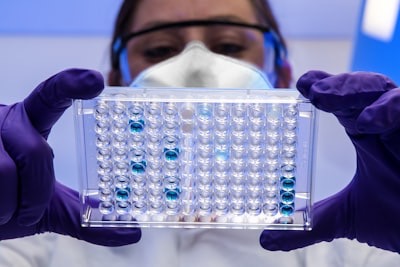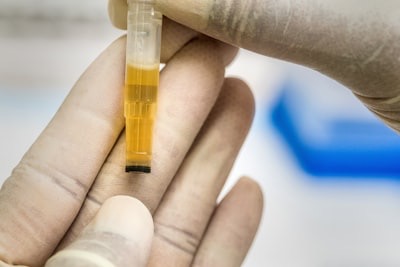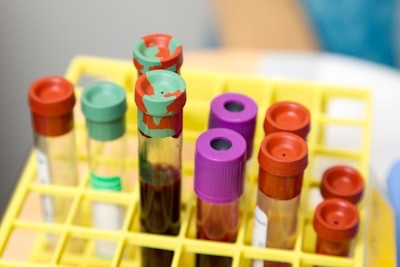Understanding Drug Test: Types, Procedure & Importance

Key Highlights
Drug testing helps figure out if there are drugs in someone’s system, using their urine, blood, or hair. While it doesn’t diagnose addiction problems directly, it plays a big role in checking how well someone is doing in treatment for drug use issues, including alcohol use disorder and substance use disorder. As a tool for monitoring, drug testing can help determine treatment adherence, monitor abstinence, and detect early relapse. Out of all the ways to test for drugs, checking urine is what you’ll see happening most often. However, tests can also be done on saliva and hair. When these tests are run, they start by collecting samples properly then move onto initial checks followed by more detailed confirmations. Medical experts step in to make sure everything adds up correctly at the end.
With safety being a top priority at work and legal matters sometimes requiring clear answers about drug use; that’s where drug testing comes into play significantly.
Introduction

Drug testing is super important for figuring out if there are any drugs in someone’s system. It gives us a clear picture of a person’s drug habits by checking stuff like urine, saliva, hair, and blood. This kind of test is really handy in lots of places like at work, during legal matters, or when doctors need to know what’s going on with a patient. Getting why we do these tests and how they work helps keep everyone safe and healthy while making sure rules are followed everywhere from offices to public spaces. So let’s get into the details about drug testing and see why it plays such a big part in keeping our surroundings free from drugs, with the guidance of the FDA, Department of Health and Human Services, and the Substance Abuse and Mental Health Services Administration.
Types of Drug Tests

There are different kinds of drug tests, and they all depend on what sample from the body we’re looking at. Each one has its own pluses and times when it works best. Urine drug tests, also known as home tests, are pretty much the go-to; they can tell if someone used drugs not too long ago, including alcohol (ethanol). Then there’s testing saliva, which is easy to do and gives you answers fast. If you want to see if someone has been using drugs over a longer period, hair follicle tests can show that history. Blood tests might make some people uncomfortable because they involve needles but are really good at spotting recent drug use accurately, including alcohol (ethanol) levels. All these methods give us important clues about a person’s drug use habits, making them super useful in programs aimed at checking for this stuff. Knowing how each test works helps pick the right one based on what needs to be found out.
Urine Drug Tests: The Most Common Method

Urine drug tests, also known as urine drug testing (UDT), are the go-to method for checking if someone has used drugs, including opiates/opioids. People prefer them because they’re easy to do and don’t involve anything too personal, just giving a urine sample. These samples can tell us a lot about whether someone has recently used drugs and they’re pretty straightforward to work with in labs. They can pick up on lots of different substances, including prescription and illegal drugs, making them the most common and comprehensive method of drug testing. Urine drug testing is also super important not only for figuring out if there’s been any drug abuse but also for making sure places like workplaces stay safe and follow the law properly. The information we get from these tests helps decide what steps to take next, whether that’s treatment or something else, showing just how crucial urine drug testing is when it comes to dealing with drugs.
Saliva Drug Tests: Quick and Non-Invasive
Saliva drug tests are a quick and easy way to check for drug use without having to do anything uncomfortable. They’re really handy because you can get results fast, making them perfect for checking on the spot, like at work or during traffic stops. With these tests, all that’s needed is a little bit of saliva to see if someone has used drugs recently. This makes it super simple and not invasive at all. Saliva testing is great when you need answers quickly and don’t want to go through complicated procedures. It’s become a favorite method for many looking into drug screening because it’s straightforward but still gives accurate info about recent drug activity.
Hair Follicle Tests: Detecting Long-Term Usage
Hair follicle tests are really good at spotting drug use over a long time because of how they work. When drugs move from the blood into hair follicles, they get stuck in the hair. As time goes by, a piece of hair can show a detailed history of someone’s substance use. This is why these tests are so useful for finding out about ongoing drug habits that other ways might not catch. By looking at metabolites in the hair shaft, these exams can tell us about patterns of drug consumption for quite awhile back. The detailed steps involved in testing hair follicles give us an insight into someone’s prolonged drug use and play an important role in thorough drug screening processes.
Blood Tests: The Most Accurate but Invasive Method

Blood tests are seen as the top choice for checking drug use because they can spot drugs in your body by looking really closely at what’s inside. To do this, someone needs to take a bit of your blood, known as a blood sample, which is why some people find it a bit too much. These tests are super good at finding specific drugs like PCP and methamphetamine among others, making them very trustworthy when you need to be sure about the results. Even though getting poked with a needle isn’t everyone’s favorite thing, these kinds of tests are still used a lot when it’s really important to get accurate information, such as in court cases or keeping an eye on how well someone is doing with their treatment for drug problems. It’s key to know both the good points and not-so-good points about blood testing so that we can make sure we’re using them right in programs designed to check for drug use.
Procedure for Conducting Drug Tests

The first step in drug testing involves collecting and managing samples. After that, the samples go through a primary check, and then more detailed tests confirm those findings. It’s really important to know about cutoff levels because they help tell if substances are there or not. Medical Review Officers (MROs), who know a lot about medical terms and NLP terminology, have an essential job of looking over the test results carefully to make sure everything is correct and follows the rules. Making sure samples are handled right from start to finish is key for trustworthy test results. MROs also take care of keeping sensitive information safe on secure platforms.
Collection and Handling of Samples
In the world of drug testing, how we collect and take care of samples is super important to make sure the test results are right on target. We’ve got to stick to certain steps so nothing messes up or changes the samples in a way that could throw off what they’re supposed to show. Whether it’s urine, saliva, hair bits, or blood being tested, these need to be gathered carefully while making sure everything is tracked properly from start to finish. On top of this, moving the samples safely over to where they’ll be checked out matters a lot too because any mix-ups along the way can lead us astray. Sticking closely by rules for handling these tests, including urine testing, makes sure everyone trusts what comes out at the end and helps keep things fair and square throughout checking if drugs are present.
Initial Screening vs. Confirmatory Tests
Initial screening tests, also known as point-of-care testing, are the first step in the drug testing process. These tests use the immunoassay method to quickly identify possible drug use. However, they may produce false positives, leading to the need for confirmatory tests. Confirmatory tests, such as urine drug screens, use advanced methods like gas chromatography-mass spectrometry to accurately detect and identify specific substances in the system. These tests are crucial for obtaining reliable results after an initial indication of drug use, and they use antibodies to detect drugs, including barbiturates, at the molecular level.
Understanding Cutoff Levels
When we talk about cutoff levels in drug testing, it’s all about the smallest amount of drugs or their breakdown products that need to be found in a sample for the test to say “yes, there are drugs here.” Different kinds of substances have different rules for how much needs to show up because some can stick around longer or pack more punch. For instance, when people take urine drug tests (which is pretty common), there are specific amounts set by big organizations for various drugs like painkillers (opioids), speed-like stuff (amphetamines), and weed components (cannabinoids). Knowing these numbers matters a lot since they can change whether a test comes back positive or negative, especially if someone’s taking medicine prescribed by their doctor but ends up with too much in their system or accidentally gets exposed to something. Employers and folks who make policies usually pick these cutoff points based on what laws say and what’s considered fair play across different jobs so everyone’s treated the same way during drug checks. To really understand what your test results mean and get them right depends heavily on understanding these magic numbers.
The Role of Medical Review Officers
Medical Review Officers, or MROs for short, are really important when it comes to checking drug tests properly. They’re doctors who make sure the test results are right and keep everything private. Especially if a test shows drugs in someone’s system, they double-check everything. These MROs stand between the labs doing the tests, the companies asking for them, and the workers getting tested. This adds an extra step to make sure no mistakes were made in saying someone used drugs when they didn’t. They have rules they need to follow from big organizations like SAMHSA that deal with substance abuse and mental health services to keep things fair and accurate.
By looking over test results carefully and thinking about any medical reasons why someone might have a positive result (like legal medications), these officers protect people from being wrongly accused of using drugs. Their knowledge is key in making sure everyone trusts how drug testing programs work.
Importance of Drug Testing
Drug testing is super important in lots of areas, making sure everyone’s safe, following the rules, and being responsible. At work, it helps keep things secure by checking if anyone’s using drugs against company policy or law. In legal stuff and when solving crimes, drug tests help prove what really happened or find out crucial information accurately. Also, for people trying to get better from drug problems, these tests are a big part of tracking how well they’re doing and helping them recover. By sticking to drug testing rules, companies and society as a whole play a big part in keeping everyone healthy and accountable. This way we all work together towards staying careful and responsible about drug use and safety.
Workplace Safety and Compliance
Workplace drug testing is key to keeping the job site safe and sticking to the rules. By checking regularly for drugs, bosses can lower the chances of problems caused by workers who aren’t fully there, making sure everyone stays safer and accidents are kept to a minimum. Staying on top of these tests helps keep things legal too. It makes sure that all employees follow what’s expected by both their company and industry standards, which leads to a responsible and professional team atmosphere. On top of this, when drug testing spots someone struggling with substance abuse issues early on, it opens up ways for them to get help through mental health services or rehab programs. This not only supports them in getting better but also boosts overall productivity at work.
Legal and Forensic Applications
Drug testing is super important when it comes to law and figuring out what happened in crimes. It makes sure everyone’s following the rules and helps solve cases. When someone’s taken drugs, these tests can show that clearly, which really matters in court. Lawyers use drug screening a lot to back up their points or prove if someone was using drugs. Also, by looking at when people used drugs, we get clues about how things went down before something bad happened. This kind of testing even figures out who should be held responsible for certain actions legally speaking. Getting accurate test results from drug screenings is key because it helps make sure justice is done right.
Treatment and Rehabilitation Monitoring
Keeping an eye on treatment and how well it’s working through drug testing is super important for making sure people get the right help after finding out their results. By watching how often drugs are used, doctors can come up with special plans to tackle substance abuse problems, including monitoring for prescription drug misuse. This kind of watchfulness helps figure out if the treatments are doing any good and catches any signs of slipping back into old habits early. Having regular checks during rehab keeps everyone honest and gives folks a boost in sticking with their recovery path. When medical experts look over test results, they make sure everything adds up correctly, which means better care and brighter futures for those fighting addiction battles, especially for those receiving methadone or buprenorphine treatment. It’s really key to have a solid plan for keeping track of everything to ensure lasting freedom from addiction and a healthier life ahead.
Challenges in Drug Testing
In the world of drug testing, getting things wrong with false positives or negatives can really mess up how much we can trust the test results. When it comes to checking for drugs at work, people get worried about their private stuff being exposed and whether it’s all being done fairly. On top of that, new types of drugs keep popping up faster than tests can catch them, so testers have to constantly change their methods to spot these new substances right. It’s super important to tackle these problems head-on if we want drug testing programs to give us the real picture without any mistakes. With different rules in various places about how drug screening should be done, organizations have got their work cut out trying not only to stick within those laws but also make sure they’re doing a good job finding what they need without stepping over any lines. Figuring out how best to do this means looking carefully at getting accurate results while respecting everyone’s privacy and keeping up with the latest trends in drugs. This is where the National Drug Early Warning System, funded by NIDA, plays a crucial role in informing and being informed by drug testing, helping to improve the practice and stay ahead of emerging and less-familiar drugs. However, it is important to note that NIDA is a biomedical research institute and does not provide personal medical advice, legal consultation, or medical review services to the public. It is always recommended to consult with a healthcare professional for any personal concerns or questions regarding drug testing. The National Institutes of Health (NIH) has also launched a harm reduction research network to prevent overdose fatalities, showing the importance of continued research and improvement in drug testing practices.
False Positives and Negatives
When it comes to drug testing, getting things wrong can cause big problems. Sometimes tests mess up by saying there’s a drug in the system when there isn’t, which we call false positives. This mistake could happen for many reasons like mixing up substances or just plain errors during the test. On top of that, with false negatives, tests might miss spotting drugs that are actually there because maybe they’re not looking closely enough or the drugs have broken down too much in the sample. It’s super important to know why these mistakes happen so we can trust our test results, including the importance of follow-up laboratory tests, especially when it comes to positive test results, and make sure everything is accurate and reliable in drug testing procedures. Additionally, it is important to note that certain foods and medications can also cause false-positive results, such as consuming poppy seeds, which can lead to a positive opioid test result.
Privacy Concerns and Ethical Considerations
When it comes to drug testing, making sure that people’s private information stays safe is really important. This means being very careful about who gets to know if someone has used drugs. Both the folks getting tested and those doing the tests need to make sure everything is done right and respects everyone’s privacy. It’s super important to keep all test results safe, maybe by using secure websites or databases where this kind of info can be stored safely. Following state laws about drug testing helps protect people from having their private details shared without permission.
With ethical stuff in mind, it’s also key that anyone being tested says okay to it first, trusts that the test will give true results, and knows how their health info will be handled with care. All of this helps make sure drug testing is fair and open.
The Evolution of Synthetic Drugs
Synthetic drugs are changing fast, making it hard for the usual drug tests to catch them. These kinds of drugs act like illegal ones but often slip through regular checks. With new psychoactive substances (NPS) popping up, things get even trickier. NPS includes stuff like synthetic cannabinoids and cathinones that keep changing their makeup to stay off the radar, showing why we need better testing methods that can keep up with these changes. On top of this, synthetic opioids such as fentanyl and its related compounds are especially dangerous because they’re very strong and common in the world of illegal drugs. To fight back against these growing threats effectively, it’s super important to keep researching and improving how we test for drug misuse, including the use of cannabis and MDMA.
Advances in Drug Testing Technologies
With new improvements in how we test for drugs, things have gotten a lot better and faster. Now, with Point-of-Care Testing (POCT), checking for drugs can be done right away, making everything more straightforward. By looking at genetic markers related to substance abuse, tests are now tailored to each person, which makes them way more effective. These steps forward mean that when testing for various substances, the results are not only quick but also super accurate. At the molecular level, scientists keep coming up with new ways to understand drug use better; these methods are really sensitive and precise. As these technologies continue to grow and change, so does the whole process of drug screening—making it fit perfectly into different work environments or situations where it’s needed.
Point-of-Care Testing (POCT) Innovations
With the introduction of point-of-care testing (POCT) innovations, checking for drug use has become a lot faster and more convenient. These advanced tools let us do tests right on the spot, which means we don’t have to wait long at all between when we take a sample and when we get the results back. POCT devices are made to give us outcomes that are both accurate and trustworthy, making the whole process of screening for drugs much better. Thanks to these advancements, healthcare workers can quickly figure out if someone’s been using drugs and step in right away if needed. This is super important because it helps improve how well patients recover or respond to treatment, especially during emergencies. By adopting POCT technology into their routines, those involved in drug testing can make quick decisions based on solid test results.
Genetic Biomarkers for Substance Abuse
Thanks to the progress in genetic studies, scientists have found special markers in our genes that can tell us if someone might struggle with substance abuse. These markers are super important because they help figure out how likely a person is to get hooked on drugs by looking at their genes and any changes in them. With this info, doctors and other health experts can better understand who might be more at risk for problems with substance use right down to the tiny details of our cells. Testing for these genetic signs gives clues about why some people might react differently when they try drugs or face addiction challenges. This custom way of dealing with drug issues shows a lot of hope for coming up with treatments and ways to prevent drug misuse that really fit each person’s needs. Scientists aren’t stopping here; they’re digging deeper into how our genes play a part in addiction so we can spot it earlier and jump into action sooner.
Conclusion
Drug testing is super important for keeping things safe and making sure rules are followed in lots of areas. It helps figure out if someone’s using drugs, checks how well treatment’s working, and makes sure laws are being met. Even though there can be some hiccups like wrong results or worries about privacy, new tech is making tests better. With cool updates like quick tests you can do right then and there, and looking at genes to learn more about drug use, the way we check for drugs is always getting better. Since dealing with drug problems remains a big deal, having programs that test for drugs is key to keeping everyone healthy and safe. By really getting what drug testing involves and what it means for people, groups can tackle drug misuse better and help make communities stronger against fighting substance abuse issues.
Frequently Asked Questions
How Long Do Drugs Stay in Your System?
How long drugs remain in your system varies based on the drug itself and personal characteristics. With urine tests, you can find out about recent drug use. Saliva tests are good for spotting immediate usage, whereas hair follicle tests can show if there’s been long-term exposure to drugs. Blood tests give us information right away about any substances present. It’s important to know these detection windows well to get reliable results when testing for drug use.
Can You Fail a Drug Test from Second-Hand Smoke?
Indeed, you can get a positive result on a drug test from breathing in second-hand smoke, especially with marijuana. While it’s not very common, if you’re in a small space where there’s lots of smoke for quite some time and the air isn’t moving much, this could happen. The key things that play into this are how well the area is aired out and how long you’ve been exposed to the smoke.
What Are the Rights of Employees Regarding Drug Testing?
When it comes to drug testing, workers should know they’re entitled to their privacy, need to agree before being tested, and deserve fair treatment throughout the process. Businesses have a duty to stick by the rules, explain their policies well, and keep test outcomes private.
How to Dispute a False Positive Drug Test?
If you get a drug test result that you think is wrong, here’s what to do. First off, ask for another test to make sure. Then, share any health info that might explain the mix-up with a medical review officer. It’s also important to check that your samples were handled correctly from start to finish. And if things still don’t look right, it might be time to talk to a lawyer about it.
https://pubmed.ncbi.nlm.nih.gov/23983217
https://doi.org/10.1002%2F1348-9585.12133
https://www.ncbi.nlm.nih.gov/pmc/articles/PMC4532432
https://www.worldcat.org/issn/0140-0460
https://www.law.cornell.edu/uscode/text/18/3565#b_5
https://www.fda.gov/medical-devices/in-vitro-diagnostics/drugs-abuse-tests
https://www.samhsa.gov/workplace